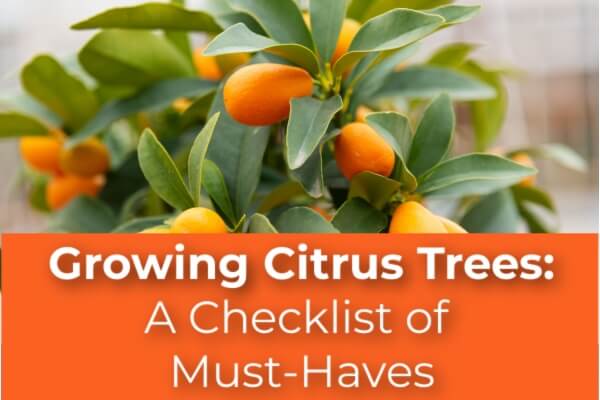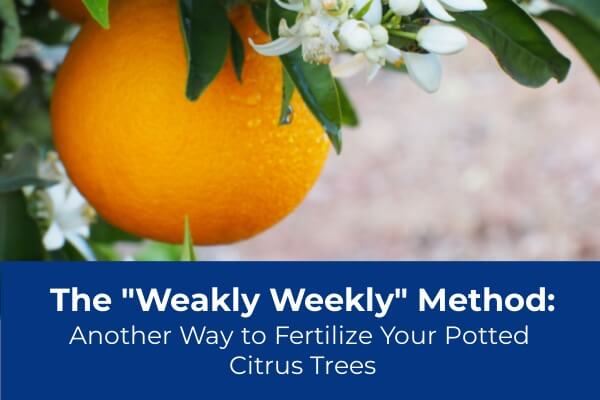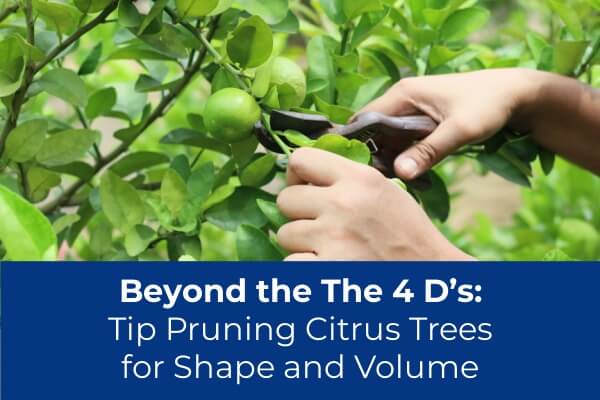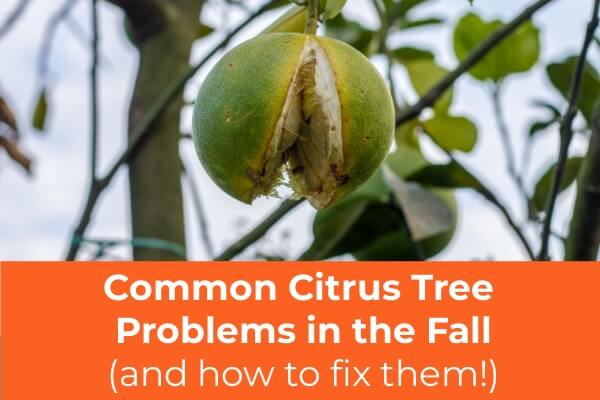Table of Contents
Growing Citrus Trees: A Checklist of Must-Haves
This is very exciting. You've made the decision to start growing your own citrus trees. Maybe it was because you saw one growing happily in a neighbor's front yard, or you tasted a variety that you've never tried before and thought to yourself, "I want to grow that!". What ever the reason is that brought you here, I hope that by the time you are done reading this, you will have a better idea of how to get started on your citrus tree growing journey. Now, let's get started!
1. THE TREE
Begin your citrus collection by choosing the right citrus tree varieties for your situation. Consider factors such as your climate, available direct sunlight, and your garden's soil conditions. Will you be growing your trees in containers or in the ground? While all of our citrus trees can be grown in containers, varieties like lemons, limes and kumquats are more adaptable to a wider range of climates than oranges and mandarins, which need a period of hot weather to ripen fully. As the saying goes in the citrus industry "You have to have the heat to get the sweet". That is, the sweeter the citrus fruit, the more heat and it requires to get optimal flavor. Citrus grow best in USDA zones 8-11 in the ground and zones 4-11 in containers.
2. THE POT
For our starter sized primo trees, we recommend a well-draining pot that measures 10-14" in diameter and about 12" deep. This size can also be refered to as a 3-gallon pot. Planting your tree in a pot that it is more than 2-3 times bigger than the rootball is not advisable. Citrus trees prefer deep watering and for the soil to dry out somewhat between waterings, and too much potting mix in the pot causes the tree to stay wet for too long. This can affect their tiny roots and as a result, affect the overall growth of your tree. Be sure to plant you tree high so that the root flare, or crown of the roots, is just visible on the surface. A tree buried too deep can cause problems such as yellow leaves, leaf and fruit loss and/or root rot.
3. POTTING MIX for CONTAINERS
A healthy potting mix foundation is key to the success of your citrus garden. After all, much of what is growing during the first couple of years of a citrus tree's life is happening just below the surface with the root structure. For potted citrus, a chunky, well-draining combination of bark, citrus potting mix and pumice can create an enriching environment for your young trees. DIY Primo Potting Soil has all of the essential materials and nutrients your tree needs for the first year or two, including some added fertilizer. This premium potting mix ensures drainage, aeration, and nutrition for your citrus trees, which promotes robust growth and eventually a bountiful harvest. Other descriptions of this potting mix is citrus 5-1-1 mix. Citrus 5-1-1 mix is a recipe of: 5 parts bark, 1 part potting mix and 1 part pumice.
4. FERTILIZER
Ensure your citrus trees' well-being with a balanced fertilizer. In-ground trees naturally have an active soil microbiome under the surface. It is composed of bacteria, fungi, protozoa and decomposers. Adding an organic fertilizer like G&B Organics Fruit, Citrus & Berry Fertilizer at the tree's roots will stimulate growth and benefit your soil.
Nutrient-packed non-organic plant food, such as Romeo Plant Food, can also stimulate growth and add much needed nutrients to your in-ground trees in a more direct way. This creates faster results.
For trees in pots, it is more difficult to maintain an active and thriving soil microbiome in potting mix, which already has been sterilized. That is why we recommend a non-organic fertilizer option like Romeo Plant Food if your are looking for fast results. Organic fertilizer will work on potted citrus trees, but the results may be slower depending to the potting mix's organic environment.
5. PEST CONTROL
Protect your citrus tree collection from unwanted pests with proper pest management strategies. One of these strategies involves planned pruning. Many citrus pests start to become a problem in the summer to late summer, and target the new and delicate leaves from newly grown flush. Once the leaves have has a chance to grow stronger and harden off, pests like leaf minors can not penetrate the thin layers of the leaf and lay their eggs. This is why we recommend that you prune your citrus trees at the very beinning of the spring, after your threat of frost has passed. That way, the new flush of leaves have time to harden off before the main threat of pests arrive in the late summer. If you notice that your trees are growing in distorted and curled, you may have an issue with another common pest, thrips. Thrips is a tiny insect that is almost undetectable to the eye. They are tiny, slender winged insects that feed by puncturing the outer layer of leaves and sucking out the contents, which results in "stippling, discolored flecking, or silvering of the leaf surface. Thrips feeding is usually accompanied by black varnishlike flecks of frass (excrement)." (1) A way to tell if there is thrips on your tree is what we call the "Breakfast Club" method. That is, to hold a piece of paper under your tree and shake it to see if any white little specks fall off. These are the thrips. To treat your tree from a thrips infestation, consider non-toxic topical treatments like Captain Jack's Insecticidal Spray. Use it is the evenings as the sun is setting, as the bees are gone for the day yet those pesky pests are active. Apply a thorough application of sprays such as horticultural oil, natural pyrethrins, or insecticidal soaps to the underside of infested leaves to treat the pests.
Do you have any questions about growing citrus in containers? Don't hesitate to email us: cs@fourwindsgrowers.com
Click here to read more citrus tips




